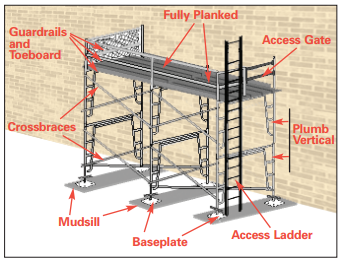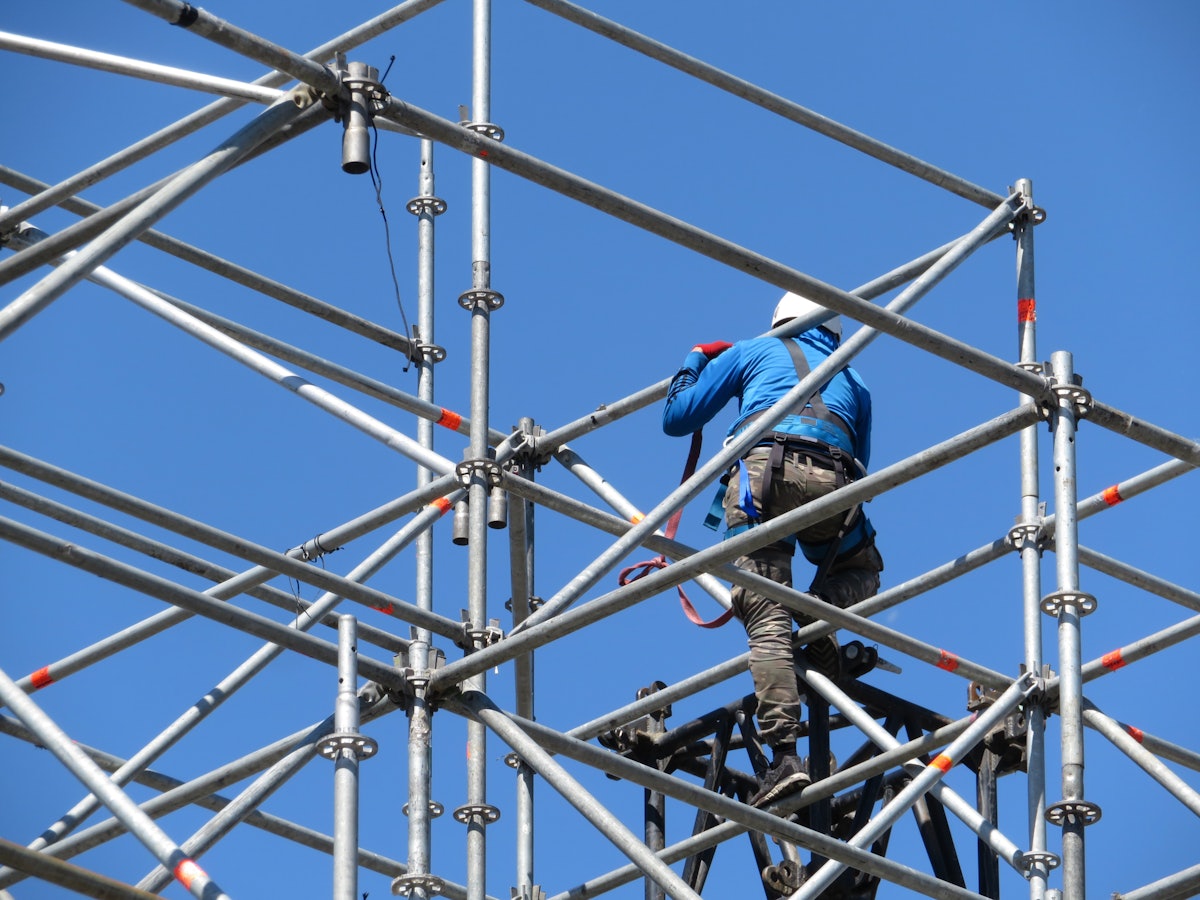Safe and Durable Scaffolding Guildford for Your Upcoming Construction Work
Discovering the Different Kinds Of Scaffolding Utilized in Construction Jobs
The building and construction market counts greatly on different types of scaffolding to fulfill certain project requirements, each offering distinctive benefits and applications. Conventional frame scaffolding supplies a tough foundation for general tasks, while suspended scaffolding is crucial for job on skyscraper frameworks.

Typical Structure Scaffolding
Conventional structure scaffolding is among the most commonly utilized techniques in the construction sector as a result of its robustness and versatility. This system contains straight and vertical structures that are assembled to develop a steady system for materials and workers. The main elements consist of vertical messages, straight journals, and angled dental braces, which with each other supply a solid structure that can support substantial tons.
Among the key benefits of standard frame scaffolding is its flexibility to different building and construction tasks, ranging from household buildings to huge commercial structures. The modular layout enables easy setting up and disassembly, making it effective for both lasting and temporary projects. Furthermore, the system can be customized in elevation and size, fitting different structure layouts and site problems.
Security is vital in scaffolding applications, and standard framework systems are furnished with guardrails and toe boards to prevent drops and guarantee employee defense. Additionally, normal evaluations and adherence to safety and security laws are vital in preserving the honesty of the scaffold. Generally, traditional frame scaffolding continues to be an essential option in the construction industry, giving a trusted platform for labor and enhancing total task efficiency

Suspended Scaffolding
Put on hold scaffolding provides a distinct remedy for building and construction tasks that need access to raised surfaces, especially in scenarios where conventional framework scaffolding may be unwise. This type of scaffolding is generally put on hold from the roof covering or upper levels of a structure, making use of a system of ropes, pulleys, and systems to produce a functioning area that can be readjusted to various heights.
One of the main benefits of put on hold scaffolding is its adaptability. It can be easily rearranged or reduced to fit modifications in construction needs, making it ideal for jobs such as window setup, frontage job, and upkeep on skyscraper buildings. Additionally, the marginal footprint of put on hold scaffolding permits much better usage of ground space in city settings, where space is commonly restricted.
Security is an essential consideration in the usage of put on hold scaffolding. Correct rigging and securing systems should be utilized to guarantee stability and stop mishaps. Operators needs to likewise be learnt the risk-free use this tools. Generally, suspended scaffolding supplies a reliable and effective option for accessing hard-to-reach areas in different building and construction scenarios, boosting both efficiency and security on site.
System Scaffolding
System scaffolding, commonly related to as a modern-day remedy in the scaffolding sector, contains pre-engineered elements that can be rapidly put together and adapted for different construction tasks. Scaffolding. This type of scaffolding is defined by its modular design, which allows for convenience and effectiveness on job websites, fitting various heights and structural needs
Normally made from high-strength steel or light weight aluminum, system scaffolding uses boosted longevity and security. The parts include upright posts, straight ledgers, and angled dental braces, which adjoin securely, ensuring a robust structure. The style frequently integrates standard installations, simplifying setting up and scaffold dimensions disassembly procedures, therefore web link lowering labor time and prices.

Rolling Scaffolding
Rolling scaffolding is a functional alternative to standard set scaffolding, made for mobility and simplicity of usage on construction sites. This sort of scaffolding includes a system supported by frameworks with wheels, permitting employees to quickly relocate it as required. The wheelchair feature substantially improves performance, as it reduces downtime linked with setting up and disassembling repaired scaffolding.
Normally built from lightweight products such as aluminum or steel, rolling scaffolding supplies a durable yet portable service for jobs calling for constant repositioning - Scaffolding. It is especially advantageous in tasks such as paint, drywall setup, and electrical work, where access to different elevations and areas is essential
Security is paramount in rolling scaffolding layout, with features such as locking wheels to avoid unexpected motion when in operation, and guardrails to safeguard workers from drops. Furthermore, many models are adjustable in elevation, fitting different project demands.
Cantilever Scaffolding

The layout of cantilever scaffolding normally includes making use of braces or arms anchored to a structure or structure, enabling the system to extend external safely. Security is extremely important; hence, these scaffolds have to be crafted to endure ecological conditions and various lots. Normal examination and maintenance are vital to ensure architectural honesty and employee security.
Cantilever scaffolding is favored for its versatility and effective usage of area, making it a popular choice in metropolitan atmospheres where room restraints prevail. Moreover, it promotes less complicated accessibility to high elevations, inevitably adding to the general effectiveness of building projects. Similar to all scaffolding types, correct training and adherence to security standards are important for workers using cantilever scaffolding.
Final Thought
To conclude, the varied kinds of scaffolding utilized in construction tasks each offer unique objectives customized to specific site requirements. Traditional structure scaffolding provides stability, while get more suspended scaffolding provides flexibility for elevated tasks. System scaffolding facilitates quick assembly, and rolling scaffolding enhances movement for varying workplace. Cantilever scaffolding efficiently deals with challenges in city settings. Understanding these scaffolding types is crucial for enhancing safety and security and performance in building and construction, eventually adding to the effective completion of tasks.
Traditional framework scaffolding gives a durable foundation for basic jobs, while put on hold scaffolding is vital for job on high-rise structures.Rolling scaffolding is a functional alternative to traditional fixed scaffolding, created for wheelchair and ease of use on building sites. As with all scaffolding types, appropriate training and adherence to safety and security standards are important for workers utilizing cantilever scaffolding.
Standard structure scaffolding gives stability, while put on hold scaffolding supplies versatility for raised jobs. System scaffolding promotes fast setting up, and rolling scaffolding boosts flexibility for differing job environments.